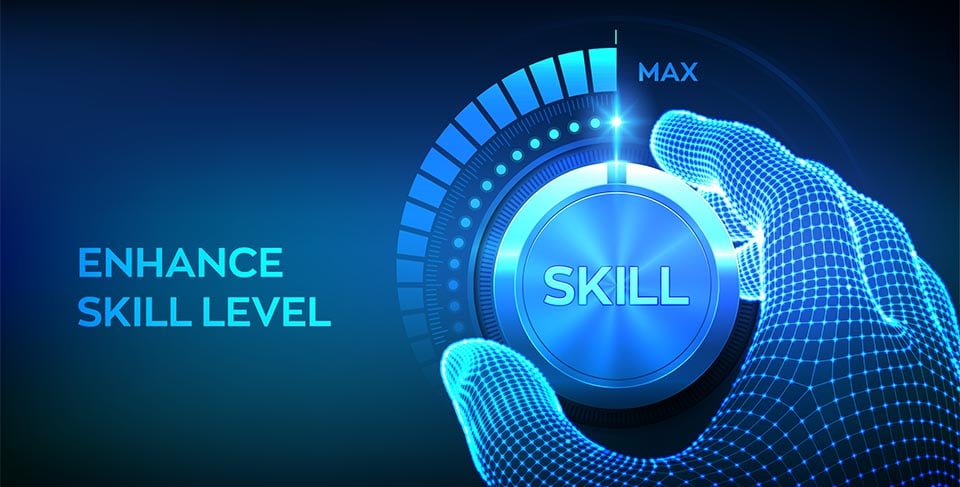Successful corporate training is all about behavior change. Employees adopt new behaviors that translate into increased performance and better outcomes. Continuing medical education (CME) has strikingly similar goals. In this first skill-driven CME article, we will explore what has, and has not, worked well in corporate training, and apply these insights to CME.
Douglas Seifert, PhD
Recent Posts
Skill-Driven CME: What We Can Learn from Corporate Training
By Douglas Seifert, PhD on Feb 25, 2021 4:10:37 PM
Call of Duty for Business: How Virtual Practice Can Deliver Performance
By Douglas Seifert, PhD on May 29, 2020 12:54:50 PM
(Originally published in Training Journal)
Training provides knowledge, but without practice, it quickly recedes and becomes a wasted investment. What can we do?
Call of Duty immerses gamers in a realistic virtual experience. Virtual game technologies can be adapted to do the same thing for business people – immerse them in realistic situations where they can safely practice making decisions, and then receive expert feedback and coaching. It’s a perfect fit for many training applications, such as leadership development, or adopting new processes in sales and coaching.
How to Go Virtual with Skill Development Training
By Douglas Seifert, PhD on Mar 23, 2020 4:17:36 PM
Skill development requires intensive interaction, and typically involves one-on-one coaching. Therefore, moving this training online requires a different approach and different tools. E-learning tools, while effective at enabling knowledge acquisition, are woefully inadequate for the task. Good news! There are powerful immersive technologies that effectively move skill development online. In this article, we’ll explore them.
How to Use Virtual Practice Technology to Drive Behavior Change
By Douglas Seifert, PhD on Feb 27, 2020 10:34:55 AM
This article was originally published in Life Science Trainers & Educators Network’s (LTEN) Focus Magazine.
Pulling training concepts through to the workplace is a challenge, particularly in leadership, coaching, and sales. Why? Because workers may “know” the concepts taught but lack the skill and the confidence to use them, once they’re back on the job. So, nothing changes.
Developing skills, particularly these soft skills, requires a different approach. Trainees don’t want to risk failure by trying something new in real situations. That’s where practice comes in. Roles plays at the end of a training session are a start, but they’re not comprehensive enough, nor do they provide the reinforcement weeks after training to drive behavior changes.
Create a Real Conversation – Get the Most Out of Immersive Training Simulations
By Douglas Seifert, PhD on Jan 27, 2020 5:19:04 PM
Why all the interest in simulation for training? Because it has the potential to solve a big problem:
Enable professionals to effectively learn how to use their training knowledge, in real situations, to change their behavior and improve their performance.
We know that one-on-one mentoring and coaching works, but it’s time intensive and doesn’t scale. Simulation technology can serve as a cost-effective surrogate to solve this vexing problem.
Analytics! Get the Most Out of Simulations and Virtual Experiential Training
By Douglas Seifert, PhD on Oct 17, 2019 2:02:03 PM
Do you wish you could measure where your learners struggle with applying their training in real-world situations? Wouldn’t that data be invaluable when considering additional or follow-up programs? Many of your L&D colleagues have the same wish. In this post, you will learn how you can actually obtain this data while substantially boosting the efficacy of your training programs.
Why E-Learning Alone Fails to Transfer - And What to Do About It
By Douglas Seifert, PhD on Jul 30, 2019 11:06:05 AM
Are your e-learning tools - Articulate, Captivate, iSpring, Elucidat, etc. - giving you the results you want? Are your training programs transferring desired behavior changes to the workplace? If not, it’s likely not the fault of the tool. Your instructional designers may just be expecting more from a tool than it was designed for… like asking a car to fly.
This article will explore why e-learning tools alone do not deliver effective knowledge transfer. Our goal is to show how immersive virtual practice and coaching in realistic environments can facilitate successful transfer to the workplace. We’ll also demonstrate how to solve a common L&D challenge using a 3D immersive learning platform.
How to Use Apprenticeship to Drive Knowledge Transfer in L&D Training Programs
By Douglas Seifert, PhD on Apr 22, 2019 4:59:00 PM
For many L&D organizations, too little of their training investment results in behavior change in the workplace. Here, we introduce how the apprenticeship model can help solve this vexing problem. It’s a way to make your training stick, and most importantly, transfer classroom concepts into desired behaviors in the workplace.
Apprenticeship has been around for thousands of years. At its foundation, it’s learn-by-doing. This model is utilized across many fields, including vocational training, aviation, and medicine - but how is it useful for training knowledge workers in business? Let’s find out!
How and When to Use VR, AR, and Game Technology for Training
By Douglas Seifert, PhD on Mar 12, 2019 10:17:00 AM
Experiential learning in 3D worlds is an exciting, highly effective way for learners to practice skills through virtual experience. These technologies are not one-size-fits-all, and it’s not always clear what is practical and effective for specific learning goals.
We’re going to dive in and take an unvarnished view of these technology to help you make an investment decision your learners will love. Then, we’ll wrap up with a fun exercise to illustrate the differences.
5 Reasons to Ditch Videos for Virtual Hands-on Learning and Training
By Douglas Seifert, PhD on Mar 11, 2019 1:30:51 PM
If you’re like many leaders we talk to, videos are not delivering the results you want. Why? Because certain types of training require more hands-on experience to make them stick – like leadership development, sales, coaching, and other areas where decision-making is important.
What’s the solution? For these situations, you can move training resources to virtual technologies that provide hands-on practice and coaching feedback, while still preserving cost-effective mobile delivery.
Let’s dive into the five reasons to ditch videos for virtual, hands-on learning and training….











